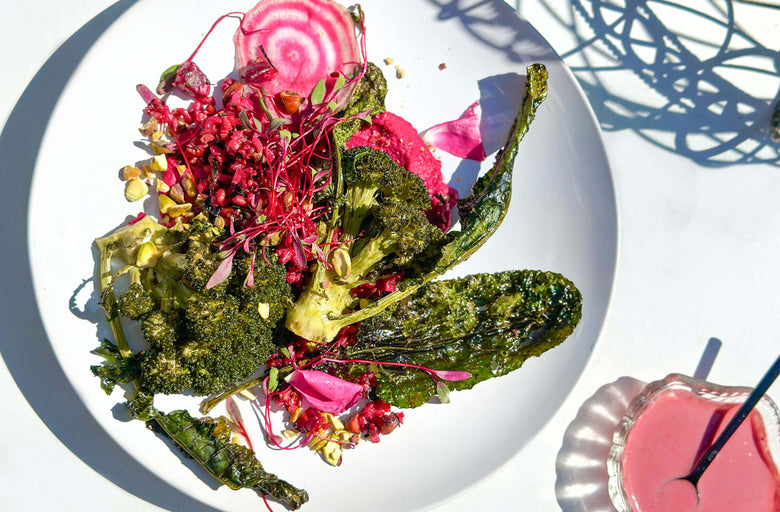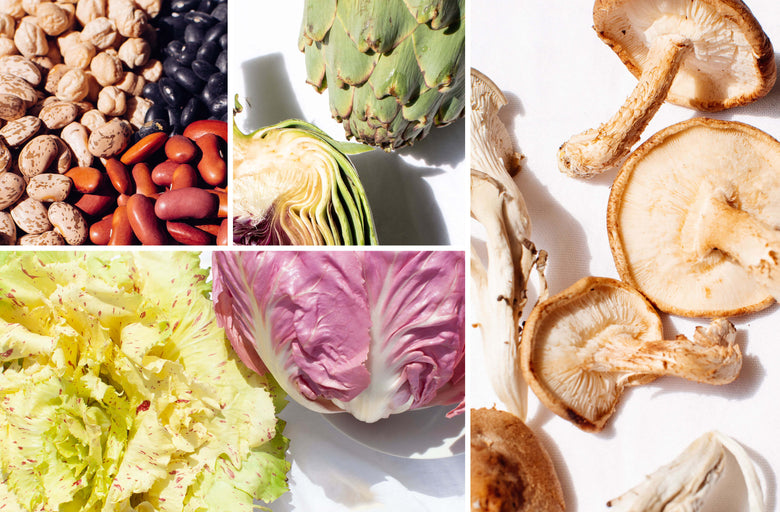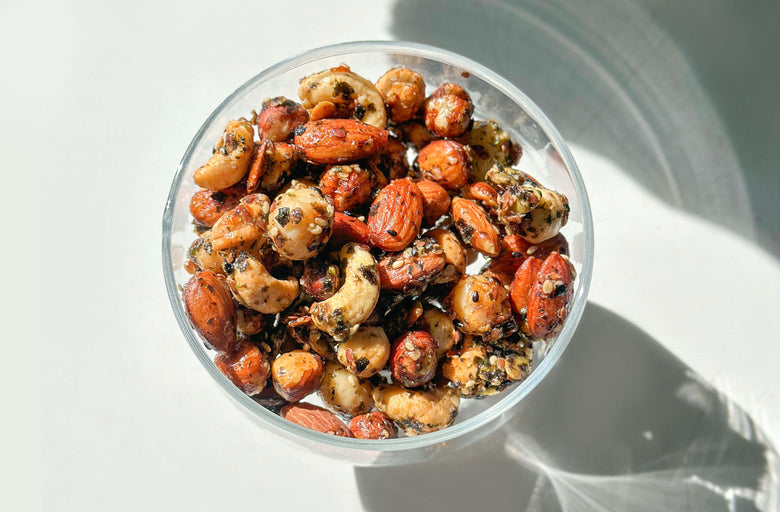About now, many of our favorite staples (kale, spinach) are feeling a bit lackluster. As we band together to follow many stay-at-home directives, we want to provide you with some surprising plant varieties that will keep things interesting in the kitchen while providing the all-important diversity that keeps our microbiome thriving, our best defense for a strong immune system. The gut has the power to boost mood (95% of your body’s store of serotonin resides here), reduce anxiety, and strengthen immunity. So flooding the body with leafy greens is always a good idea, especially during a stressful time. Here, six different plants: chock full of nutrients and easy to toss, tuck, and chop into the existing provisions in your pantry. We also have a solution for some lingering vegetables in your crisper drawer; try a little home fermenting. It’s another boost for the gut and uses up the veggies you may have been inclined to toss.
Chard
The large fan-like leaf and hardy stem make chard and its many varieties nature’s wraps; take advantage of their toughness and ample source of vitamin K by tucking in sliced cucumbers, carrots, olives, radishes, and adding generous spoonfuls of hummus and tzatziki. Up the flavor ante with herbs and seasonings like dill, fennel, parsley, and celery salt.
Microgreens
Following the adage “small but mighty,” microgreens are a more concentrated (and therefore more nutrient-dense) version of their mature counterpart—by some estimations, their nutritional content can be up to 40 times potent than the parent plant. Dousing a bowl of lentil pasta with fresh cilantro microgreens, or layering pea shoots on a veggie sandwich are two delicious opportunities. Sprinkle your microgreens on everything from tacos to a Protein + Greens Super Powder smoothie.
Dandelion Greens
Dandelion is best known for its detoxifying properties and its distinct bitterness. It also provides iron, magnesium, copper, and folate, as well as vitamins A, E, K, and B1 through 3. To benefit from its phytonutrient wonder, make a dandelion root herbal infusion. (To ensure you squeeze in enough daily fiber, use raw greens as the base of a salad, toss with high-quality olive oil and add lemon for acidic brightness. From there, a handful of walnuts, sliced blood oranges, and roasted beets does the trick).
Radish Greens (or Beet Greens, Turnip Greens, and other “tops”)
The tops of roots are some of the most nutrient-dense parts of the plant, with complex flavors and rich mouthfeel. Saute with olive oil and plenty of garlic as a side or finely chop and sprinkle on some roasted carrots or Brussels sprouts. They also work really well as soup bases: start with a mineral broth and add seaweed or kombu, blending in the greens and water. Or, chop them up and use in place of scallions in miso soup. Or, for a squash-based soup, add garlic, ginger, and then fold in blended greens for the best of both worlds.
Chicory
Chicory is bitter to be sure, but that is its superpower, stimulating bile and curbing sugar cravings. Radicchio, a variety of chicory, tastes delicious ripped up atop a slice of pizza—the bitterness adds a cool twist to a red sauce pie—or, create a simple salad with water-dense baby gems and butter lettuce, grainy mustard, olive oil, nuts, and seeds for a healthful first course.
Watercress
The peppery green boasts anticancer properties called glucosinolates and naturally decreases inflammation through dietary nitrates. It has a strong, almost fiery flavor profile but is delicious whipped into a pesto, paired with potato for a hearty soup, or sauteed alongside shiitake mushrooms.
Recipe: Fermented Vegetables
To extend the shelf life of fresh produce and add incredible, immune-boosting gut health benefits, try easy, at-home fermentation. Radishes, asparagus, peppers, broccoli, beets, and green beans are all delicious, nutrient-dense options.
Ingredients:
- 4 cups of fresh, peeled/diced vegetables of roughly the same size (for even fermentation)
- 4 cups of chlorine-free, filtered water
- 2 tablespoons sea salt
- Seasonings: garlic, dill, red chili flakes, basil, oregano, fennel—whatever combination sounds most enticing to you
Directions:
- Fill a wide mouth jar with cut vegetables, leaving about an inch of room at the top.
- Add the seasonings of your choice.
- In a separate bowl, mix the water and salt until the salt has completely dissolved.
- Pour the water brine into the mason jar covering the vegetables.
- Place a ferment weight (or a smaller jar) within the jar of vegetables, to use as a weight and keep everything submerged.
- Cover the jars with something breathable, like a coffee filter and a rubber band, or several layers of cheesecloth.
- Leave your vegetables to ferment for two to three days, ideally in a space that is 70-75 degrees F. Check daily to see the vegetables are below the brine.
- By day two or three, taste-test one vegetable. Once the flavor is to your liking, place an air-tight seal on the jar, remove the weight, and place the jar in the fridge. Use it as a topping on salads, sandwiches, pasta, or eat it straight from the jar.
Explore More:






